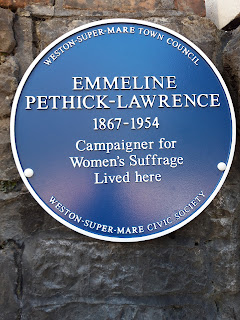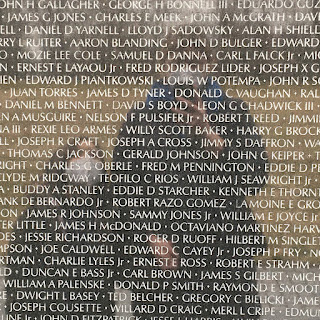Women in Street Names Project
Carrie de Silva was our key note speaker at
the WESWWHN Annual Conference on Gender and Commemoration in October 2021. In
her address Carrie discussed women celebrated in street
names and the consequences of the persistence of cultural norms in public
commemoration of women’s lives.
Some of you reading this will have heard of the street
names project and may have heard a Zoom talk I did a few months ago. The project was
launched, in a small way, at the London School of Economics in 2019. I intend to produce a book of
brief biographical notes of some of the women who have a street named after
them in the UK and also a paper considering some of the deeper issues
highlighting, in my view, the importance of the visibility of women in public
spaces and the potential impact that a lack of such representation may have on
individual women’s self-perception and personal development.
Note that an
unreconstructed view of gender has been taken as all those found, to date,
clearly identified as women, but that is not to exclude or diminish more
nuanced gender classifications if and when they are encountered in this context.
The project
emerged through work I’d done on ‘first women’. As a former principal lecturer
in law at Harper Adams University (where for over two decades I taught
prospective rural practice chartered surveyors) I had compiled a list of ‘women
firsts’ which grew out of a lecture slide on earlier lawyers (1). This bare
list led me to more extensive work on early women in the professions, the first
women surveyors, lawyers, etc – work
with which I’m still engaged.
I am also involved
with the British Federation of Women Graduates (BFWG) (2). This organisation
was established in 1907 as the British Federation of University Women to
provide a network and collective voice for graduate working women in promoting
higher education and, importantly, supporting the career progression of
academic women. It became and still is affiliated to the International
Federation of University Women (3). The organisation is now the British
Federation of Women Graduates. At an AGM in 2018 we were looking for a project
with a meaningful academic output but also, importantly, something with which all
members could join in and find personal significance.
As well as an
interest in women’s biographies I’ve been thinking about the enduring problem
of the lack of women in senior roles. Even with the great numbers of women now
going into many (although not all) professions and spheres, it is still a
wide-based triangle as it were. The reasons for the lack are, of course,
complex and some of the issues keeping women out of high office are also
problems for men. The hours and demands of top jobs for example. And women are
certainly self-selecting out for these reasons, along with the increasing
pressures that come with a public profile, not least social media intrusion.
Pan-gender issues to some extent but still disproportionately problematic for
women.
Others self-select
out as they simply don’t want a more senior role, which is fine. But
there is certainly still a gender issue with women not applying for roles as
they simply don’t consider themselves to be eligible.
How does the public commemoration of women fit into all this? I wanted to consider the subliminal and not so subliminal messages picked up from the cradle onwards – the subtle but persistent culturalisation building up day on day and how the relative lack of female names in public spaces feeds into this. And then, the impact this may or, indeed, may not have in women’s self-perception, and the impact of women’s self-perception on their own career aspirations and management.
 |
| Where are the women? |
Thinking of public representation led to thoughts of statues – much highlighted recently regarding race, but also gender. Caroline Criado-Perez reported in 2016 that of the 925 statues recorded by the Public Monuments and Sculpture Association, less than 3% (25) were of non-fictional, non-royal, named women (4). Likewise, in 2018 Allison Vale found only 12% (111) of London’s 903 English Heritage Blue Plaques commemorated women (5). There is a slow but, hopefully, growing move to address this and a Wales and South West readership will certainly know of the statue of educator, Betty Campbell (1934-2017) unveiled in Cardiff in September 2021(6).
As well as statues there are building names, the work of female artists, references in museums and galleries, blue (and other coloured) plaques, paintings and photographs of women and much more but I latched onto street names.
 |
| Blue Plaque commemorating Emmeline Pethick-Lawrence unveiled in 2020. Five out of nineteen Blue Plaques in Weston-super-Mare commemorate women. |
Not an original
idea but existing projects, at home and abroad, have tended to concentrate on
one city, usually the capital. This study is, necessarily, somewhat random. I
cannot review and then further research the street names of every hamlet,
village, town and city in the UK. But a goodly sample has been gathered and
will continue to be. Along with the wider considerations of significance, the
project is intended to celebrate the stories of some of the women named and
does not pretend to completeness.
I have put the
word out far beyond the BFWG and am more than happy for you to do the same. I
have had interest from academics, local councillors, museums, history groups,
tour guides, women’s associations and others with over 500 names to date
although not all will make the proposed book. Some will be omitted as time
precludes finding background, including many single first names such as Jane
Street, etc although back stories on these first name only streets are
welcomed. Others are royalty and
aristocracy. These are not dismissed out of hand – they were people too and
many local ‘gentry’, if I can use that word, engaged in notable charitable and
other work of interest. But I will largely omit aristocracy chosen simply for
their title rather than for their own stories and am, for obvious reasons, and
with all due respect, ignoring Queens Victoria and Elizabeth and the more
common saints. Others which will be included don’t actually help the
public representation factor as the street takes their surname only.
Quantifying the
impact of the dearth of women commemorated is not straightforward. I am formulating a study engaging women
across age ranges, educational levels and experiences, to ascertain not only
their self-perception but, perhaps more easily quantifiable, their awareness of
role models.
A book is, of
course, somewhat finite, and subject to new editions, but I intend to set up a
website with at least an ongoing listing of street names so that it can be
added to in an open ended fashion. This would have been quicker off the mark if
my website adviser hadn’t told me the format of my current working spreadsheet
wouldn’t work and I need to revise things. When I started the project I hadn’t
really formulated the idea of a website and what platforms to use, etc. As they
say with directions to a destination – ‘don’t start from here’!
Notes
(1) Email me for a copy – carrie@carriedesilva.co.uk
(2) https://bfwg.org.uk/bfwg2/
(3) Now Graduate Women International - https://graduatewomen.org/, with federations worldwide.
(4) The New Statesman, 26 March 2016, www.newstatesman.com/politics/2016/03/i-sorted-uk-s-statues-gender-mere-27-cent-are-historical-non-royal-women
(5) Vale, Allison (2018) A Woman Lived Here (London: Robinson).
(6) 29th September 2021, see BBC News https://www.bbc.co.uk/news/uk-wales-58721710
Carrie de Silva lectured in law and taxation to prospective rural chartered surveyors at Harper Adams University for over 20 years. She is currently a visiting lecturer and consultant with a great interest in life-long learning and developing engaging and pertinent CPD and works in the land-based, property and equestrian sector. Along with this, Carrie researches various historical matters, particularly early women in the professions, and also the history of agricultural education (in general, and with regard to women in particular). Carrie has written widely in the academic and professional press along with producing several entries for the Oxford Dictionary of National Biography.
Picture Credits:
Where are the women? - The
unveiling of the statue of Sydenham in the Oxford museum: August 9, 1894, by
the Marquess of Salisbury ... / address by Sir Henry W. Acland, Wellcome Collection, Public Domain
Blue Plaque Commemorating Emmeline Pethick-Lawrence - Editor (For list of Blue Plaques see the Weston-super-Mare Town Council website.)



Comments
Post a Comment